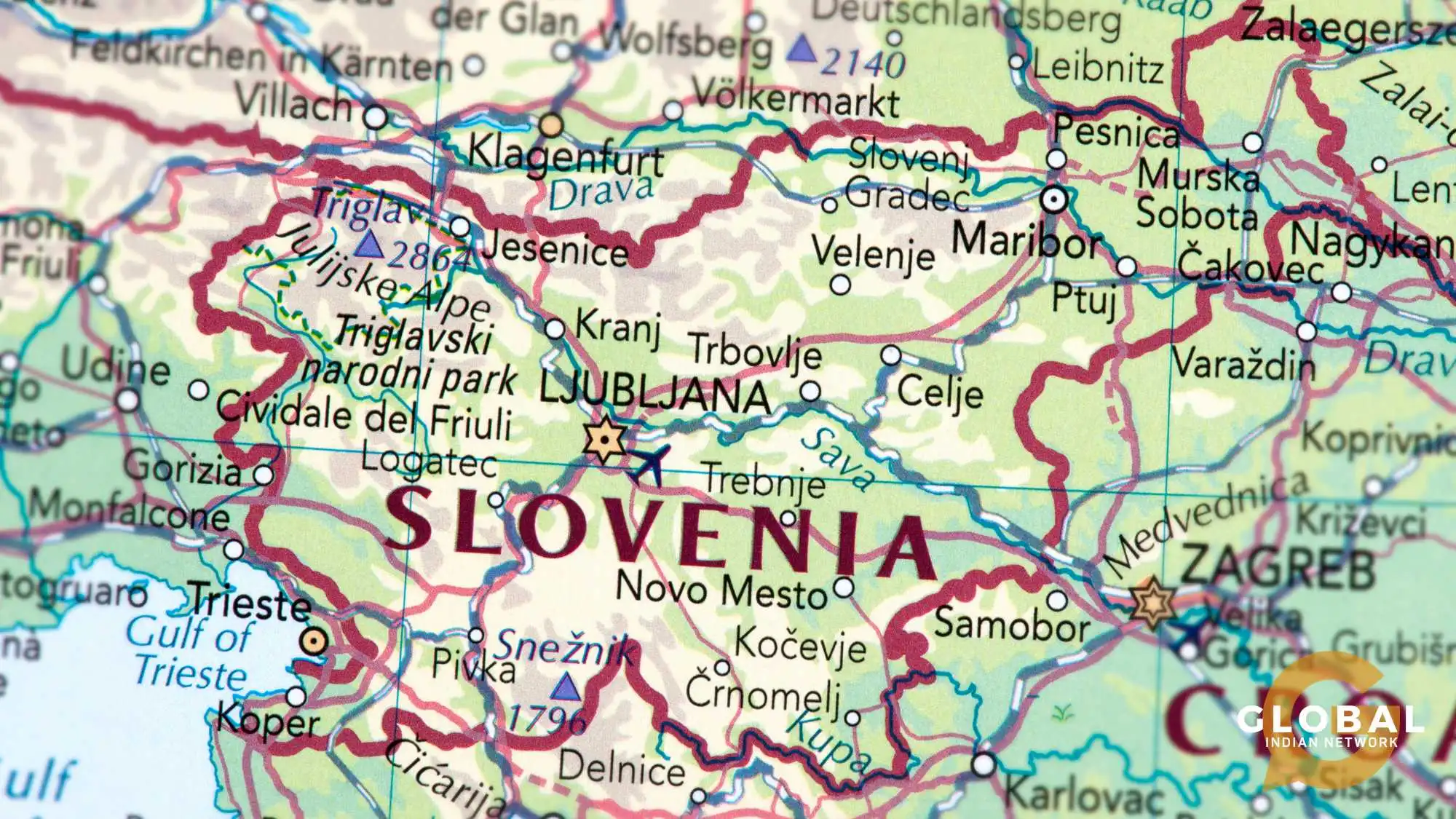Nestled in the heart of Europe, Slovenia beckons with a tapestry of captivating stories, from its resilient history and vibrant culture to its remarkable culinary treasures. As we embark on this journey, we will delve into what Slovenia is known for, unravelling its hidden gems. These are just a glimpse of Slovenia's treasures, each destination weaving a unique tale of history, nature, and cultural richness that leaves a lasting impression on those fortunate enough to explore this enchanting country.
Table of Contents
Strategic Location
Slovenia, nestled in Central Europe, shares its borders with four countries, each contributing to its diverse cultural and geographical influences. To the north, Slovenia is bordered by Austria, fostering historical and economic ties. To the west, the Italian border delineates a boundary characterized by the dynamic landscapes of the Julian Alps and the Adriatic Sea. In the northeast, the Hungarian border of Slovenia contributes to the country's connections with Eastern European cultures. Finally, to the south and southeast, Slovenia is bordered by Croatia, a relationship underscored by shared histories within the former Yugoslav Federation. These international boundaries define Slovenia's geographic identity and play a significant role in shaping its rich cultural heritage and diplomatic relations with neighbouring nations. The diverse landscapes and cultural interactions along these borders contribute to Slovenia's unique character and offer a fascinating exploration of its history and connections with its European neighbours.
History and Culture
Slovenia's history is intricately woven into the tapestry of Eastern Europe and the complex narrative of the former Yugoslav Republic. The region witnessed Celtic and Illyrian settlements in ancient times, later succumbing to Roman influence. The fall of the Roman Empire ushered in various medieval powers, including the Habsburgs and the Venetians.
During the 20th century, Slovenia became an integral part of the Kingdom of Yugoslavia, emerging after World War I. The interwar years were marked by cultural and political developments, with notable Slovenian thinkers contributing to the Yugoslav state.
However, World War II brought occupation and division. Slovenia faced a turbulent period, first under Axis occupation and later as a part of the Socialist Federal Republic of Yugoslavia under Josip Broz Tito. The post-war years saw economic and cultural growth, but political tensions simmered beneath the surface.
In 1991, Slovenia declared independence, marking the first breakaway from the Yugoslav Federation. The Ten-Day War ensued, but Slovenia emerged victorious, establishing itself as a sovereign nation. The subsequent years witnessed a remarkable transformation as Slovenia embraced democracy, joined the European Union in 2004, and solidified its place on the global stage as present-day Slovenia.
Slovenia's history, deeply intertwined with Eastern Europe and the Yugoslav Republic, reflects the resilience of its people and their pursuit of self-determination in the face of historical challenges.
Slovenia's cultural tapestry is woven with influences from its neighbouring nations, resulting in a unique blend that defines its identity. The country boasts a rich artistic heritage, with literature, music, and visual arts flourishing. Notable Slovenian authors like Ivan Cankar and Drago Jančar have made substantial contributions to European literature.
In music, the accordion-driven folk tunes known as "narodnozabavna glasba" are an integral part of Slovenian culture. Traditional dances, such as the "kolo" and "polka," echo the lively spirit of the Slovenian people, celebrated during festivals and special occasions.
Language
The native language of Slovenia is Slovene (also known as Slovenian). The Slovene language, an integral part of Slovenia's cultural identity, has a rich and evolving history. Rooted in the South Slavic branch of the Indo-European language family, Slovene has undergone centuries of development, shaped by cultural, historical, and linguistic influences.
Slovene emerged as a distinct language in medieval times, finding expression in religious texts and legal documents. Protestant Reformation literature in the 16th century significantly influenced the development of a written standard.
During the Habsburg Monarchy, Slovene faced challenges as German became the dominant administrative and cultural language. However, the 19th-century Romantic movement sparked a renewed interest in the Slovene language and identity, with figures like France Prešeren contributing significantly to its literary development.
The 20th century saw standardization efforts, particularly after the formation of Yugoslavia. After gaining independence in 1991, Slovene solidified its status as the official language, playing a crucial role in education, media, and the Slovenian population.
Slavic languages are a branch of the Indo-European foreign language family spoken by the Slavic peoples. They form a language family with a common origin and include various languages such as Russian, Polish, Czech, Slovak, Ukrainian, and Slovene. The Slavic languages are classified into three main groups: West Slavic, East Slavic, and South Slavic, each with its own subgroups and individual languages. These languages share similarities in grammar, vocabulary, and linguistic features due to their historical and cultural connections within the Slavic community.
Capital City
Ljubljana, Slovenia's charming capital, is the larger city that enchants visitors with its blend of history, cultural sites, and vibrant energy. The iconic Ljubljana Castle, perched atop a hill, offers panoramic views of the city. Stroll along the picturesque Ljubljanica River, adorned with charming bridges, including the Triple Bridge and Dragon Bridge. With its cobblestone streets, the Old Town hosts architectural wonders like the Town Hall and Cathedral of St. Nicholas. Preseren Square, a lively hub, showcases Slovenia's national poet statue. Ljubljana's thriving culinary scene, vibrant markets, and cultural events add to the city's allure, creating a delightful tourist experience.
Wildlife
Slovenia's diverse landscapes, ranging from the Alpine peaks to the Mediterranean coast, foster a rich tapestry of wildlife. Triglav National Park, encompassing a significant portion of the Julian Alps, is home to iconic Alpine species. The elusive chamois and ibex navigate the rugged terrains while brown bears roam the dense forests.
The country's lush greenery and pristine rivers provide habitats for various bird species, such as the Dinaric Mountains and Karst Plateau, which host Griffon vultures, peregrine falcons, and Eurasian eagle owls. The picturesque Soča River supports diverse aquatic life, including the native marble trout.
Slovenia's forests teem with wildlife, with red deer and roe deer gracing the woodlands. Lynx, though rare, finds refuge in the more secluded areas. The endangered European ground squirrel, a symbol of biodiversity conservation, inhabits meadows and grasslands.
In the coastal region, the Secovlje Salina Nature Park provides a haven for migratory birds, such as flamingos and herons. The diverse ecosystems, including wetlands and salt pans, contribute to the park's ecological significance.
Slovenia's commitment to conservation is reflected in its efforts to protect endangered species and preserve habitats. The coexistence of human communities and wildlife underscores the country's dedication to maintaining a delicate balance, ensuring that future generations can marvel at the diverse and thriving wildlife that calls Slovenia home.
What is Slovenia Known For?
Slovenia, with its diverse attractions, from national parks and museums to fishing spots and vineyards, offers a multifaceted experience for travellers. Whether seeking outdoor adventures, cultural immersion, or gastronomic delights, this European country caters to a spectrum of interests, promising an enriching journey for those who explore its treasures.
Lake Bled and Its Island Sanctuary
With its crystal-clear waters and a backdrop of the Julian Alps, Lake Bled is a postcard-perfect destination. What makes it truly enchanting is the tiny island situated in the lake's center. The Assumption of Mary Church, perched atop the island, is a pilgrimage site accessible only by traditional wooden boats known as "pletna." Visitors can ring the church bell and make a wish, adding a touch of magic to this idyllic setting.
Lipizzaner Horses: Masters of Equestrian Art
Slovenia is home to the Lipizzaner horses, renowned for their elegance and grace. These white stallions, traditionally associated with the Spanish Riding School in Vienna, are bred at Lipica Stud Farm. Visitors can witness captivating equestrian performances showcasing the horses' remarkable skills, combining artistry and athleticism.
Predjama Castle: A Fortress in the Cliff
Perched dramatically in the mouth of a cave, Predjama Castle is a historical monument that is a testament to the ingenuity of medieval architecture. This impregnable fortress, built into the cliff, served as the residence of the legendary knight Erazem Lueger. The castle's mysterious aura and strategic location make it a must-visit, offering a glimpse into Slovenia's medieval past.
Idrija: A UNESCO Heritage Town of Mercury Miners
Idrija, a picturesque town in the Julian Alps, is known for its mercury mine and is a UNESCO World Heritage Site. The town's unique lace-making tradition and the Kamšt waterwheel, an engineering marvel from the 16th century, add to its cultural significance. Idrija's mercury mine, once the second-largest in the world, provides insight into the region's industrial history.
Škocjan Caves: Subterranean Marvels
The Škocjan Caves, a UNESCO World Heritage Site, offer a journey into the bowels of the Earth. This subterranean marvel, carved by the Reka River, features colossal underground chambers and an awe-inspiring bridge. The cave system's biodiversity and its geological significance make it a captivating destination for nature enthusiasts and explorers alike.
Slovenian Wines: Nectar of the Vineyards
Slovenia's winemaking tradition is deeply rooted in its picturesque landscapes and diverse climate. The country boasts a rich viticultural heritage, producing many wines. From the robust reds of the Primorska region to the crisp whites of Podravje, Slovenian wines captivate the palate with their distinct flavours. Notable varieties include Rebula, Malvasia, and Šipon. Wine enthusiasts can explore the scenic wine routes dotted with family-owned vineyards, offering a taste of Slovenia's liquid gold.
Karst Caves: A Subterranean Wonderland
Slovenia is renowned for its famous cave systems, and the Karst region takes center stage in this subterranean wonderland.
The Slovene Littoral's Karst Plateau is renowned for lending its name to the distinctive landscape known as karst, characterized by the dissolution of carbonate bedrock through water action, resulting in the formation of caves.
The Postojna Cave, one of the world's largest karst caves, showcases nature's artistry with plenty of plant and animal species. Visitors can marvel at stunning stalactites and stalagmites, underground rivers, and vast chambers, immersing themselves in a surreal realm sculpted by time.
Apicultural Excellence: Slovenia's Golden Honey
Slovenia takes pride in its beekeeping traditions, earning it a reputation as a top honey-producing country. The diverse flora, from alpine meadows to pristine forests, contributes to the unique flavours of Slovenian honey. Acacia, chestnut, and linden honey are among the sought-after varieties. Beekeeping is not merely a practice; it's a cultural phenomenon, and the Beekeeping Museum in Radovljica provides insights into this age-old craft, celebrating the vital role of bees in Slovenian agriculture.
Triglav National Park: Slovenia's Alpine Oasis for Outdoor Enthusiasts
Slovenia, a compact and diverse country, presents a mesmerizing array of tourist attractions extending beyond its capital. Its national parks prominently display the nation's dedication to preserving its natural splendour. Triglav National Park, bearing the name of Slovenia's highest summit, Mount Triglav, stands as a sanctuary for outdoor enthusiasts. Amidst its alpine landscapes, pristine lakes, and winding rivers, a picturesque backdrop unfolds, inviting activities ranging from hiking and skiing to mountaineering. The park encapsulates the essence of Slovenia's commitment to maintaining the ecological integrity of its landscapes, offering visitors a harmonious blend of adventure and natural beauty.
Slovenia's Angler's Paradise: Pristine Waters and Alpine Lakes
Slovenia, adorned with pristine rivers and alpine lakes, offers a haven for fishing enthusiasts. The Soca River, renowned for its emerald waters, provides an idyllic setting for fly-fishing, with its trout and grayling populations. Lake Bohinj, nestled in the heart of the Julian Alps, offers a tranquil fishing experience surrounded by breathtaking landscapes. The Adriatic Sea provides opportunities for saltwater fishing adventures in the coastal region. Additionally, numerous smaller rivers and lakes throughout the country, such as the Idrijca River and Lake Bled, contribute to Slovenia's diverse and rewarding fishing destinations. Whether seeking river tranquillity or alpine serenity, Slovenia caters to the angler's delight.
Cultural Treasures and Alpine Adventures: Exploring Slovenia's Museums and Skiing Gems
For those seeking cultural enrichment, Slovenia is home to fascinating museums. The Slovenian Ethnographic Museum in Ljubljana provides insights into the country's cultural heritage, while the Technical Museum of Slovenia in Bistra showcases the evolution of technology. Small towns such as Piran and Kranjska Gora offer great skiing experiences.
Bountiful Adriatic: A Seafood Extravaganza
Slovenia's coastline along the Adriatic Sea brings forth a bounty of delectable seafood. Piran, a charming coastal town, is a gastronomic haven where fresh catches find their way to local eateries. Anchovies, sea bass, and squid, prepared with a touch of Mediterranean flair, grace the menus. Visitors can savour the fruits of the Adriatic, relishing the seaside ambience and the Slovenian cuisine it offers. In addition to these attractions, Slovenia embraces its culinary heritage. The coastal town of Izola, with its seafood-rich cuisine, exemplifies the country's gastronomic delights. Local dishes like Idrija Žlikrofi, a type of dumpling, and Prekmurje Layer Cake showcase the regional diversity of Slovene dishes.
Famous People
Slovenia has produced various influential figures across multiple fields, enriching the global stage with their talent and achievements. Ivan Cankar is a prominent figure in literature and is considered Slovenia's greatest playwright and author. His insightful works delve into human nature's and societal issues' complexities, contributing significantly to European literature.
On the sports front, Slovenian athletes have made a remarkable impact. Notably, the NBA's Luka Dončić, born in Ljubljana, has emerged as one of basketball's brightest stars, showcasing exceptional skill and earning accolades internationally. Ski jumping legend Peter Prevc has left an indelible mark, achieving numerous victories and setting sports records. Primož Roglič is a Slovenian professional road racing cyclist. Born in 1989, Roglič gained recognition as a successful ski jumper before transitioning to cycling. He has achieved notable success, including winning stages in Grand Tours and overall victory in prestigious races like the Vuelta a España. Roglič's accomplishments have made him a celebrated figure in Slovenian sports.
Tina Maze, who clinched two Olympic gold medals and emerged as the overall champion in the 2012–13 World Cup season, epitomizes Slovenia's passion for sports, with many Slovenians actively engaging in athletic pursuits.
In 1990, Andrej and Marija Štremfelj from Slovenia became the first married couple to summit Mount Everest, the world's highest mountain.
In the world of science, Jožef Stefan, a physicist and mathematician, made groundbreaking contributions, particularly in thermodynamics. The Stefan–Boltzmann law bears his name, a testament to his lasting influence.
On the political stage, Milan Kučan, Slovenia's first President after gaining independence, played a pivotal role in the country's transition to statehood and economic growth. His leadership during critical times has left an enduring impact on Slovenian politics.
Cultural luminaries like the contemporary philosopher Slavoj Žižek, known for his influential works in critical theory and psychoanalysis, have earned global recognition. Slovene poets achieved their highest level with the Romantic poet France Prešeren in Slovene literature. These individuals, among many others, showcase Slovenia's rich talent pool and contributions to the world across literature, sports, science, politics, and philosophy.
Conclusion
In conclusion, what Slovenia is known for extends far beyond its breathtaking landscapes, encompassing a rich history, diverse culture, and notable achievements. Slovenia is known not merely for its stunning vistas but also for its renowned traditions, stories, and the warm spirit of its people. The beauty of Slovenia resides not just in its natural scenery but in the captivating narratives woven into its cultural tapestry.
FAQs
What is the old name for Slovenia?
The historical name for Slovenia is Carniola, which refers specifically to the central region of the present-day country. It was part of the Habsburg Monarchy and later the Austrian Empire.
What is a human fish in Slovenia?
The "human fish" refers to the olm (Proteus anguinus), a unique aquatic salamander found in the subterranean waters of Slovenia, particularly in the karstic caves. The olm is known locally as "človeška ribica" or "human fish" due to its fleshy skin colour and human-like appearance.
What is the currency of Slovenia?
The official currency of Slovenia is the Euro (EUR), adopted in 2007 when the country became a member of the Eurozone, replacing the Slovenian tolar.
What is Slovenia known for producing?
Slovenia produces high-quality wines, particularly in regions like the Vipava Valley and the Karst. Additionally, the country is renowned for its honey, particularly acacia and forest honey, and its exceptional olive oil from the Slovenian Istria region.









